Ghost pots are the most efficient killers in the marsh. Read on to learn why they're so dangerous and how you can help remove them.
More...
Ghost Pots 411
Okay, before we kick off this blog post let me hash out why I used "ghost pot" instead of "ghost trap" or "ghost crab trap" or something along those lines.
Yes, I know we call them "crab traps" here in Louisiana, but virtually everywhere else in the world they're called crab pots and the term "ghost pots" is more popular on the Internet.
Which is important, because I write these blog posts to help you, the inshore angler, and if you search "ghost trap" you get a bunch of results about Ghostbusters.
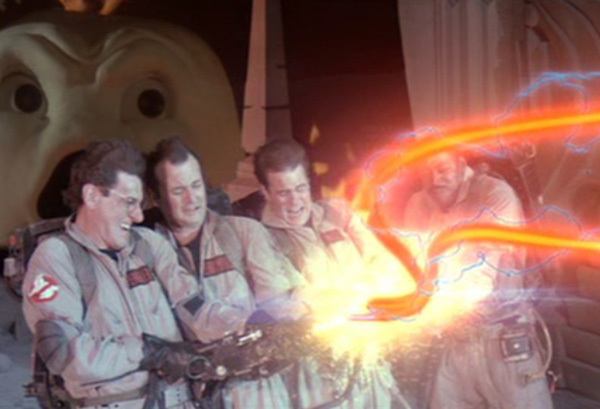
If you don't know what scene this is, we can't be friends.
I'm not competing with signature Bill Murray movies for real estate in search rankings, so we are gonna go with "ghost pot".
Because this, according to the Internet, is a ghost trap.
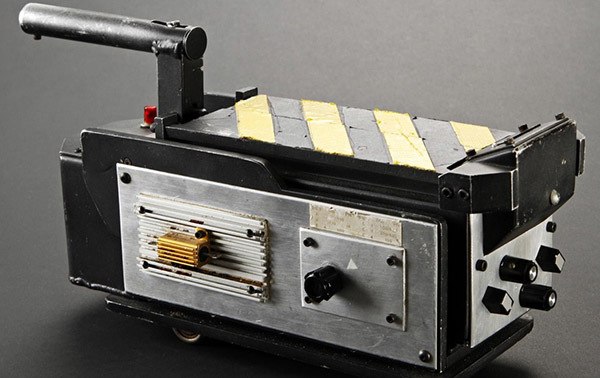
But not today, Internet!
What we're diving into is far scarier than any scene in any Ghostbuster movie, ever. (Yes, I am factoring in that awful reboot.)
Nay, we're diving into indiscriminate silent killers bleeding our marsh to death.
What is a ghost pot?
Also known as a derelict crab trap, a ghost pot is a crab pot that has lost its float and cannot be recovered by its owner.
Spend enough time in the marsh and you see them everywhere, especially in shallow water.
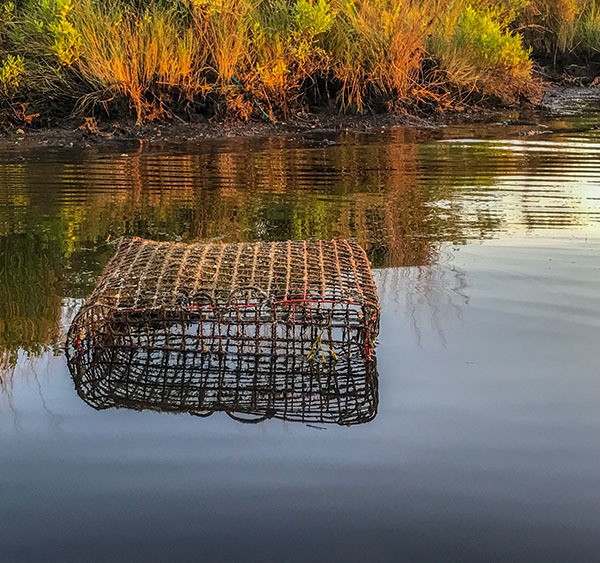
What makes them so bad?
To really understand this you must first understand how a crab trap works in the first place, so here's a quick rundown.
That's the normal, everyday operation of a crab trap and it works just fine.
That is, until the float identifying its location is cut.
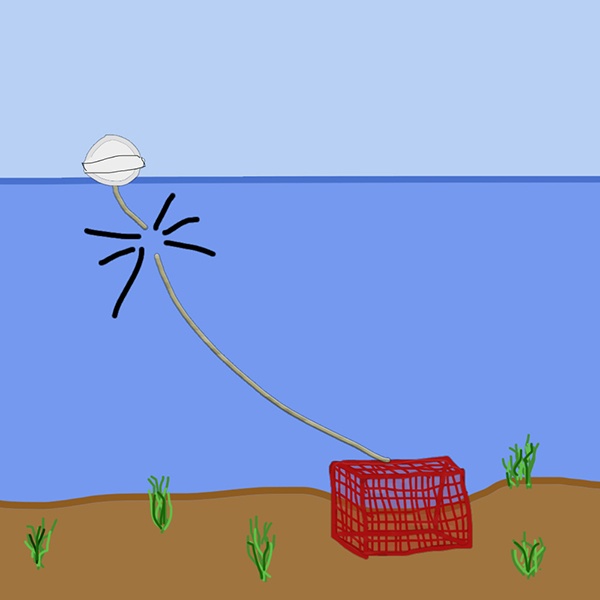
Literally took me all day to draw this stunning graphic. You're welcome.
Without someone to recover it, the crabs inside will die.
It Gets Worse
If it's not obvious yet, the ghost trap is continually re-baited as crabs crawl inside, eventually die and new crabs arrive to eat those now deceased.
Derelict crab traps inevitably turn into aquatic punji pits dotting the most productive bodies of water in our marsh.
It Gets Worse Than That
Ghost traps continue trapping and killing anything that fits, which pretty much includes everything swimming in the marsh from crabs to redfish and even turtles.
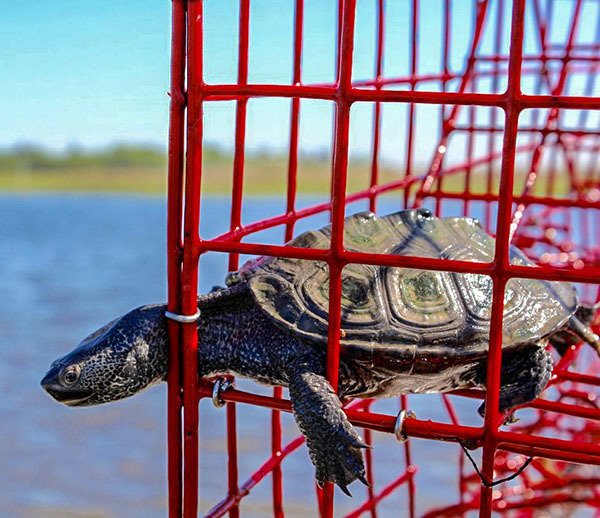
Oh, and barnacles can grow on them over time, creating a permanent bait for sheepshead.
But Wait, It Gets Even Worse
Crab traps are not randomly distributed throughout the marsh.
Instead, they are placed with purpose, often placed smack dab in the middle of the marsh's highways and byways.
What do you mean by "highways"?
Not literal highways me and you drive down.
Instead, I'm referring to how bodies of water in the marsh are categorized by how much water flows through them.
A small trenasse is like a narrow sidewalk, and a large pass is like a six-lane interstate highway.
The more flow a body of water has, the more traffic from crabs (or speckled trout) it sees.
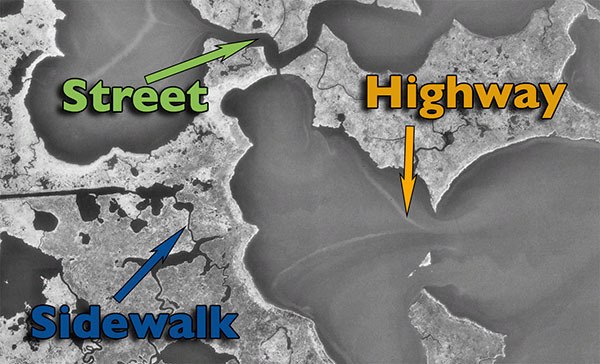
If you want to learn more about this concept and how to apply it to inshore fishing, you should read Highways, Streets and Sidewalks.
So, you can bet your favorite E-series Curado that crabbers won't place their pots where they won't count, but where they will yield the best harvest.
Should those effectively placed crab pots lose their float, they then become effectively placed ghost pots.
And yes, they really are there. I see them all the time when graphing. Literally dozens.
Take a breath and find something to hold on to, because now we finally have a Category Five Shitstorm.
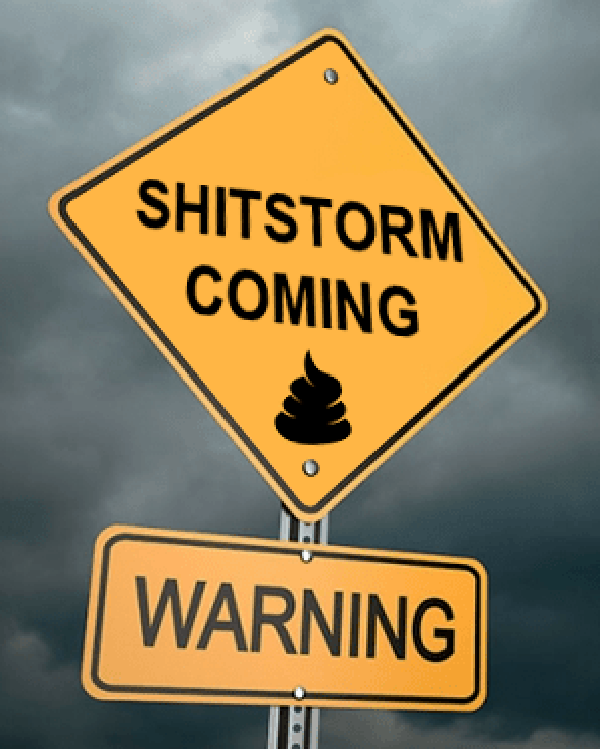
Crap! On a scale of 1 to 10, how bad is it?
A solid twelve.
No one knows exactly how many crabs are lost to ghost pots, but according to this article Louisiana is losing 12 million blue crabs each year.
Twelve million.
Of course, that's not accounting for other species like croaker or sheepshead, but in my opinion it's safe to assume that derelict crab traps are bad news for the health of our marsh.
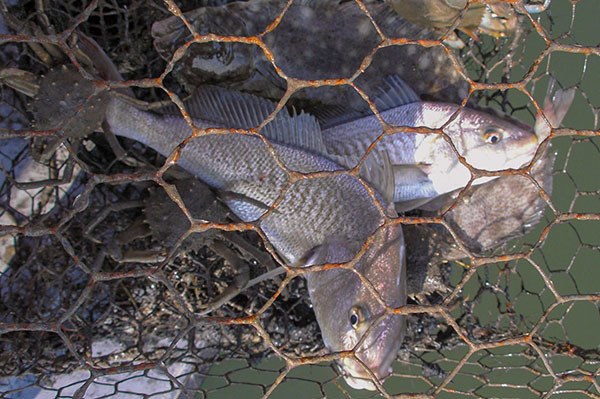
You don't have to be Rain Man to do the math in your head, twelve million crabs is not a small amount and their demise obviously leaves a huge impact on the marsh.
That we even catch crabs at all seems miraculous and perhaps a testament to Louisiana's fishery.
Okay, whose fault is it?
All of us and none of us.
Look, some crabbers treat the marsh like no one else ever visits, littering their traps in the middle of navigable waterways as if they're mines to keep German U-boats out of Louisiana.
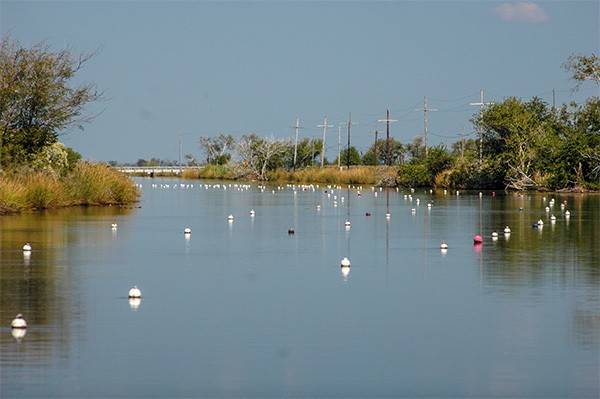
"Sure buddy, I'll just drive around that."
At the same time, some recreational anglers are basically blind idiots with no sense of direction, running down an entire row of traps, cutting off the floats and creating brand new ghost pots.
Sometimes there's just so many you hit one anyway.
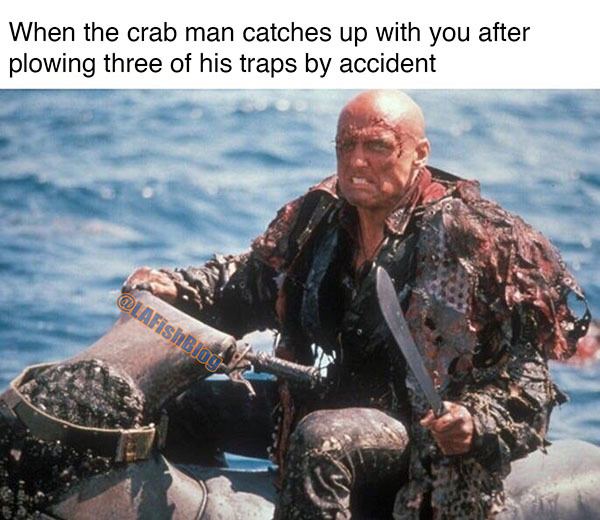
And, of course, there are circumstances beyond our control (i.e. hurricanes) that create ghost pots anyway.
So, I'd like to peruse Facebook comments for this blog post without seeing crabbers misspelling "chivo" while their equally not-rocket-scientist recreational counterparts complain about the blaze orange 6-inch floats they can't see in the middle of the canal.
Just being fair.
Now, moving on to the important next step.
How We Can Remove Ghost Pots
So we figured out what ghost pots are, what they do, how bad they are and whose fault it is that they exist (all of ours).
Now here's the part that matters, and that's the appropriate action to remove them from the marsh so we may have a healthy ecosystem and all that good stuff.
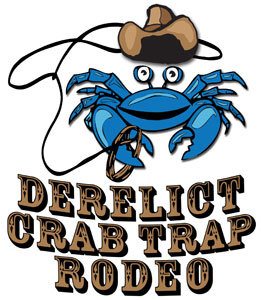
Derelict Crab Trap Rodeo
This is an event put on by the Louisiana Department of Wildlife and Fisheries each year, usually in February.
Before the rodeo is held, areas subject to crab fishing are shut down, and all crab traps removed by their owners.
Then, volunteers amounting to that of a small army comb the marsh looking for, and removing, derelict crab traps.
Click the button below to see dates and places rodeos are to be held.
Can I remove ghost pots myself?
No.
Not only will folks look at you funny, but it's against the law to interfere with someone's legal attempt to fish, and messing with crab traps that don't belong to you is operating in a gray area.
At best, you may remove them to the shoreline.
Otherwise that's why LDWF hosts the derelict crab trap removal program, and it's there you can volunteer.
Lagniappe on Derelict Crab Trap Removal
I've not had the opportunity to participate in a rodeo (one day) but I do have some thoughts that could help anyone remove more traps, and I do this at risk of sounding like a broken record.
Go For The Worst
Ghost pots dealing out the most damage are located in those "highways" mentioned earlier.
Problem is, they're not easily seen and recovered like those found in shallow water.
No, they could be in water beyond 20ft deep!
I see them all the time when searching for structure and cover with side imaging sonar.
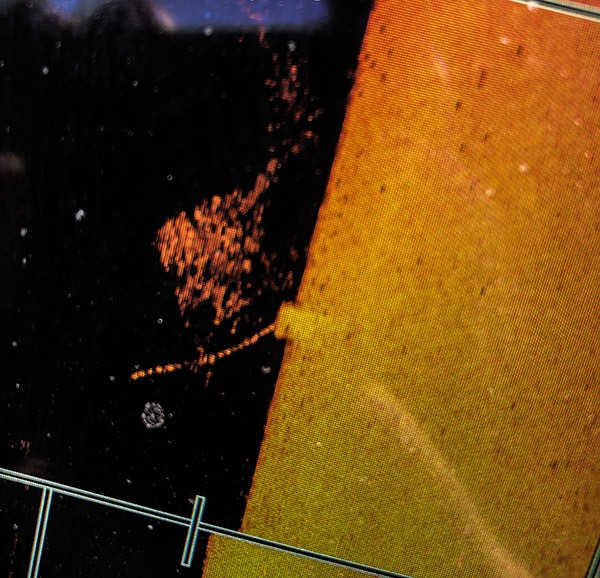
Baitfish relate to this ghost pot incorrectly deployed with floating line.
Removing any ghost pot is good, but those sticking out of shallow water are the low-hanging fruit.
Deploy Batman-style Grappling Hooks
Sure, it sounds crazy, but getting those deep ghost pots won't be easy.
However, there is this video of some impressive hardware that would earn a nod from the Dark Knight.
Anyway, those are some things to consider for maximizing efficiency, especially seeing how the odds are stacked against us:
- blue crabs swim year-round in Louisiana
- limited time to remove ghost traps
- thousands of square miles of marsh to search
- can't always see what we're looking for
Conclusion
Derelict crab traps, ghost crab traps, ghost traps, ghost pots (or whatever you want to call them) are another item on the list of things threatening our incredible wetlands.
The difference now is that you understand the gravity of the situation and what can be done to fight back.
Thanks for reading, and sign up below if you'd like to know when I publish another blog post.
Tight lines, y'all!

You’re welcome, Jerome!
I never knew ghost crab traps were such a problem and I never heard of the ghost trap rodeo, thanks for telling us about these things Devin!
I agree 100%. I have no idea why we don’t implement something similar.
I noticed that plastic stone crab pots have a degradable cypress or pine slat that opens up an escape route should the trap get lost. Same for the Chesapeake area crab traps, they have a non galvanized non stainless hog ring door that degrades fairly quickly should the trap get lost. Seems like a workable idea. Far better than what we have now.
Thanks for commenting, Joe.
One of the big problems is that fishermen will leave traps out and unattended for months. I have talked
About this quite often. Louisiana should make sure that these traps are run at least three times
A weak.
Indeed, I came across that information while researching this topic. Thanks for commenting!
They had the same problem in the Chesapeake Bay. As I remember, they stopped crabbing for a year and the crabmen did nothing but hook ghost pots for a year. Google it, it seems they were very successful.
There’s certainly more crabbers than there used to be, so more traps are being deployed in the water. So that’s something to consider, but I hear you loud and clear. Thanks for commenting!
Hey Glenn, thank you for taking the time to comment. If you’d like to help, you can volunteer for the next Derelict Crab Trap Rodeo. You can find more information using the links in this blog post. Good luck!
Of course, thanks for commenting Steve.
First, one should ask how this became a problem? The chicken wire traps were in use for generations. The introduction of plastic coated wire lead to the current suituation. Removing lost pods is a temp fix
I think you missed another problem with ghost traps. Since they are placed in traffic areas as you mentioned when the floats are missing their are a lower unit hazard.
Devin I’m a retired guy in Gautier, Ms that fishes our marsh and sees your post. I don’t have the newest sonar etc but would like to help our problem with ghost pots. The low hanging fruit are obvious. Thanks for what you do. Glenn Hogue
Lloyd, I have and that’s why I wrote this blog post.
If I marked down every one I saw we’d end up with a map littered with pins.
My advice to anyone is to start graphing where ever crab traps are deployed, because that is where the derelict crab traps were placed to begin with.
Thanks for commenting, LLoyd. Tight lines.
Why don’t you chart some of the worst ghost pot grounds for people can clean there. Keep tract of the progress and publish this scientific test to prove the traps are indeed marsh killers. The marsh has enough problems. It does not need this too. Thanks for the blog,